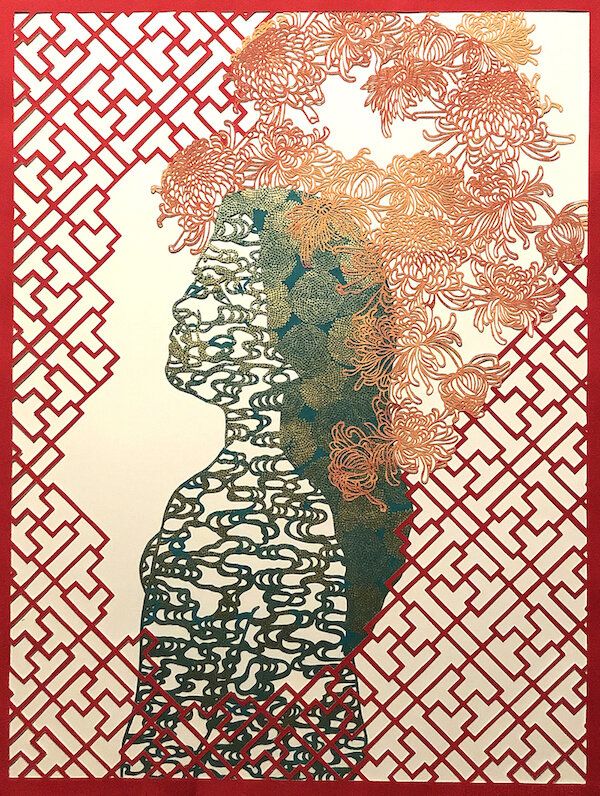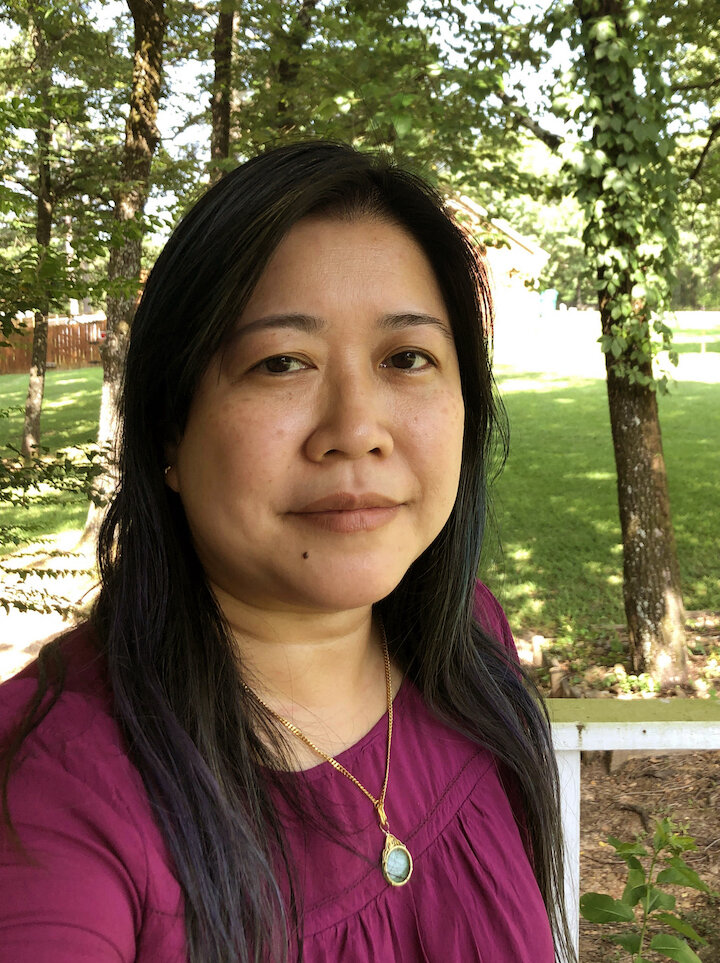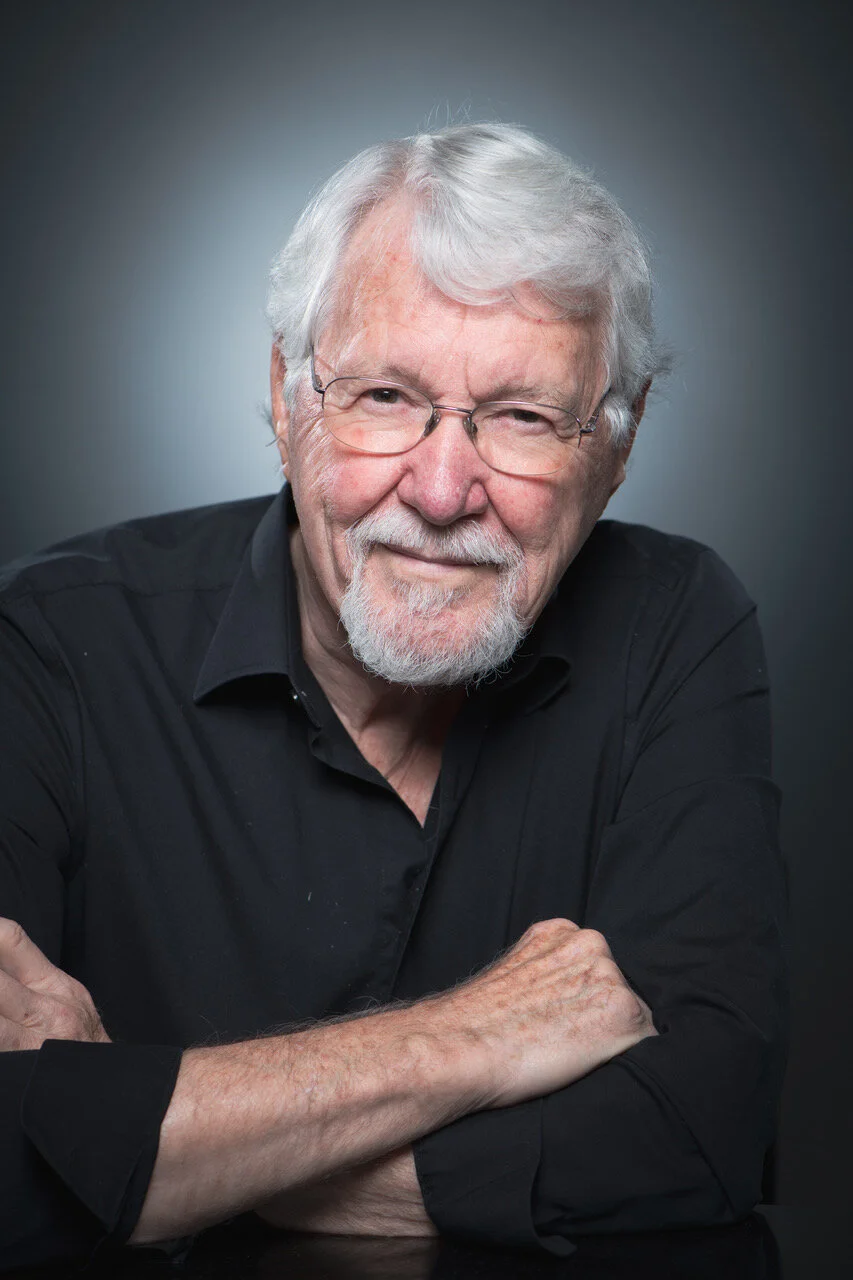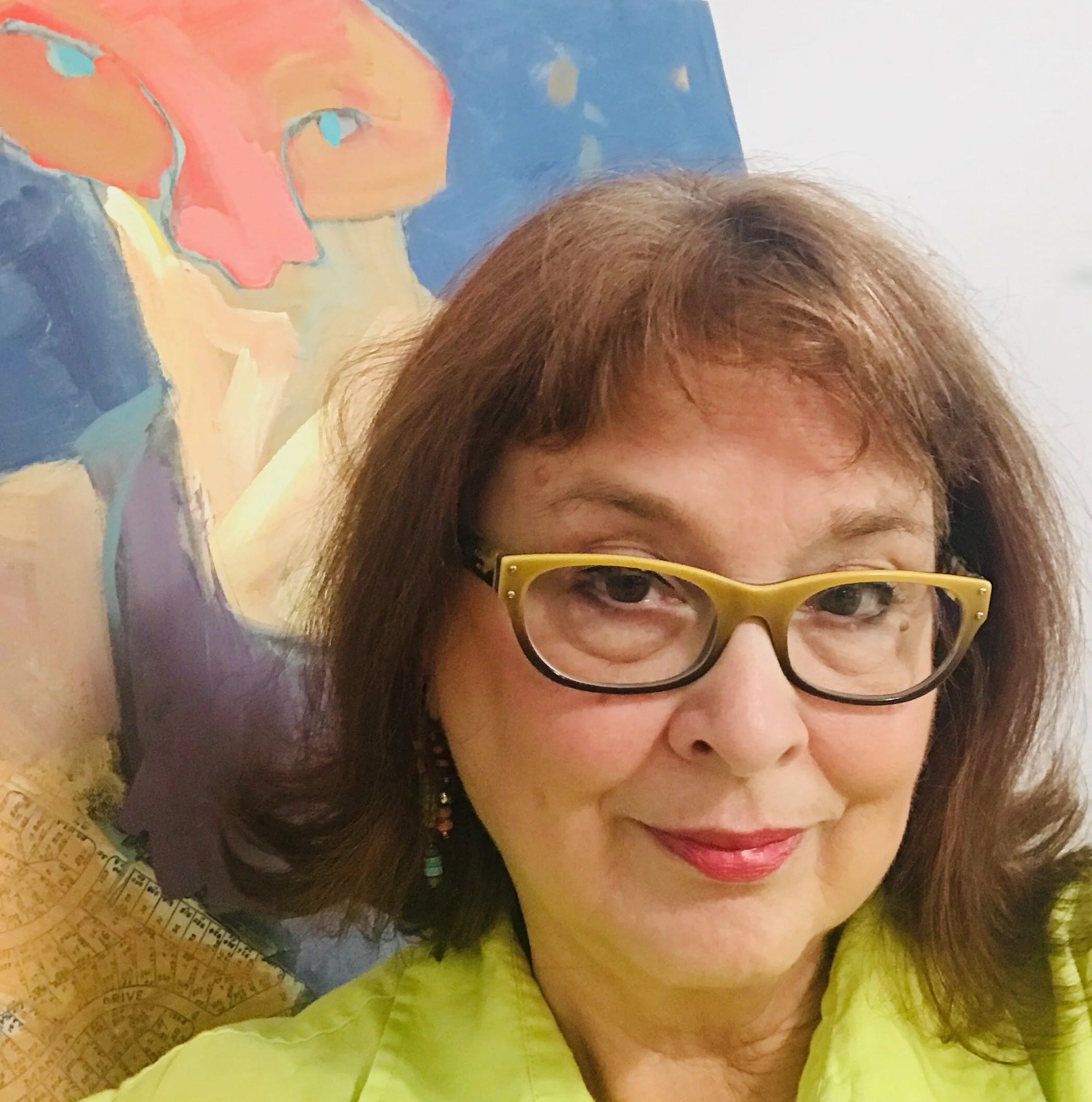Interview with artist Tammy Harrington
Tammy Harrington is an artist and educator living in Russellville, Arkansas. After earning an MFA in visual arts with an emphasis in printmaking from Wichita State University, she took a position at the University of the Ozarks in Clarksville, Arkansas in 2002 and is Professor of Art. Tammy is a printmaker and paper cut artist. Her images celebrate the cross-culture Chinese American experience. She has received numerous Outstanding Faculty Awards and currently serves as the President of the Arkansas Society of Printmakers. Tammy exhibits her work widely and more of it can be found at her website tammyharrington-art.com.



AAS: Tammy, I believe you grew up in Sioux Falls, South Dakota? How did you end up Russellville teaching art at the University of the Ozarks?
TH: I always loved making art throughout my childhood/adolescent life so I attended the University of South Dakota with the mindset of becoming a commercial artist. Things changed when I took my first printmaking class – it was a medium that really connected with me. I ended up splitting my emphasis between graphic design and printmaking and ultimately went to graduate school at Wichita State University for printmaking. If I were to be sensible, switching to a fine art emphasis was not the most practical decision, but I loved the print medium so much - the process, the replication, and the final appearance was what I was passionate about. It was a risk I was willing to take. After graduate school, my husband Neal and I relocated to Arkansas because he was hired at Arkansas Tech University for a 1 year visiting professor position. I taught at ATU and at the University of the Ozarks as an adjunct. I almost didn’t teach at U of O because they had asked me to teach a painting class. As a printmaker, the prospect of teaching painting was terrifying. Neal convinced me to teach the class – he said “You know more than they (the students) do. You’ll do great.” It was the beginning of my career at U of O. I will start my 20th year teaching full-time this fall. I love it.
AAS: Growing up in a Chinese household was art a part of your everyday family life?
TH: My parents immigrated to the United States in the late 1960’s from Hong Kong/China and they lived life as hard working blue-collar cooks at a Chinese/American restaurant owned by my Uncle and Aunt. I mostly made art at school but I would veer towards more creative and artistic projects when I had the opportunity. Growing up, I was neither encouraged nor dissuaded from making art. I just did it, it was a part of who I was. In my home life, the concept of hard work and putting in effort with the hope of success and stability was prominent. My parents worked 6 days a week, lots of nights and weekends and they were able to give my sisters and me a good life. We didn’t wear a lot of name brand clothes or have the fanciest toys and gadgets, but we always had a house to live in and food on the table. I credit my perseverance and work ethic based on their example.
“When I make art, it is hard for me to not reference my own experience as the subject matter.”
AAS: You’ve said that your work is influenced by the art of Chinese paper cutting. Would you talk about that and the history of that art form?
TH: Chinese paper cuts were originally used as part of religious rituals with gold and silver foil cuttings. Eventually paper became the primary cutting surface and the imagery became both decorative and symbolic. Usually the imagery was a way to celebrate holidays and special events, to express happiness, and to seek good luck. Paper cuts were an inexpensive and easy way to decorate doors, windows, and walls. I first discovered paper cuts during graduate school. Paper cuts were a perfect blending of stylized Chinese imagery with the crispness of graphic printmaking processes – primarily relief. I was searching for a way to express my Chinese American heritage. Growing up, my household was a mix of Chinese and American in both experiences and appearance. We ate rice every day, I had my own pair of engraved (name) chopsticks, and the house was decorated with a sprinkling of Chinese accents (pillows, small sculptures, lanterns, silk tapestries, etc.). This was mixed with the trendy décor of the day like green shag carpeting, the floral patterned couch, and the wooden console television. My physical appearance is Chinese and that is something that I am proud of but it does come with perceptions of how I should act or speak. There probably have been several times that others are surprised to hear me speak in a Midwestern accent and not with a thick Asian accent. But I was also told by a relative that lived in Hong Kong that I wasn’t Chinese because I didn’t speak fluent Cantonese. Through my art practice with this subject I discovered that I was neither totally Chinese nor totally American – I was a ratio. Sometimes I would lean into my Chinese-ness especially when I am around my parents and other times I would lean into my American-ness like when I was at school. This is a struggle that I continue to have even now although I accept that I am what I am despite what others want me to be. My children who are a mix of Chinese and Caucasian races have this experience as well.
AAS: Your paper cuts are often combined with intaglio printing. Would you talk about that process and how you achieve the final look of wonderful texture and depth?
Tammy in her home studio.
TH: When I started cutting paper instead of using the imagery in my printmaking work, I incorporated traditional imagery and created visual collages based on iconography and symbols and cut these into red paper. I am part of an artist group, Culture Shock, which consists of female artists that get together for critiques and artistic dialogue. It was during one of my critique sessions that it was suggested to try cutting into different papers and into my prints. To break away from the traditional appearance. This was a pivotal moment in my artistic career. I started to look at how to change up the idea of identity and imagery. I incorporated Chinese lattice and patterning into my physical imagery and used intaglio printed paper as the surface. Cutting into my prints gave me flexibility – I could adjust what colors to use and it was also more unpredictable. I didn’t know exactly what parts of the print imagery were going to make it in or hit the cutting room floor. It was freedom, even though the cutting process is very laborious. Just because I drew a line on the paper as a guide, it didn’t require me to cut the paper at that exact spot. In my recent work, I utilize 3 visuals – a figure, the lattice or grid, and an organic component. There are times that all three of these elements layer on top of each other – the organic mixing with the geometric. My cuts have become more delicate so even with the three layers of visual information, the color of the background will sometimes peek through. The use of decorative papers has enhanced and expanded my expression as well.
AAS: Let’s talk about some specific pieces. Immersed is a spectacular piece – extremely intricate. What was the inspiration for that piece and how was it put together?
Immersed, intaglio print and paper cut, 21” x 28”
TH: I start my pieces by selecting a pose, using a reference photo. With the piece Immersed, the pose is contemplative or sad (depends on your interpretation) and in a protective position with the arms embracing the torso. The quietness of the pose led me to insert a delicate floral design across the skin. It is visually open even though the position is closed off. The hair flows as if the figure is immersed under water, the hair slowly curls and moves. With this piece, I made a definitive decision on the color palette of the figure (and printed the paper after the image was determined). Other times, I select from what prints are already available. The latticework grid is intrusive with its heavy thick line and the angular shapes. It surrounds the body with its sharp corners like a cage or barrier but towards the bottom the hair is able to break free. I am trying to capture the stillness and tension of the space.
AAS: Persistence is another piece with incredible detail. Why that title?
Persistence, intaglio print and paper cut, 28” x 21”
TH: Persistence was inspired by the strength and resilience of being a woman. When I created this piece, the world was an unsure place, politically and socially. I had a more clear vision when planning this work because I wanted to show the figure as an active subject. Power is expressed because the arms are crossed in a defensive pose and the figure stares back at the viewer confrontationally and confident. I utilized the image of the pine tree because it is a symbol of longevity. The trunk and limbs are twisted and gnarled but sturdy and weathering the elements. This solid form is offset by the delicate needles/leaves which shows that both qualities can exist together. I selected this particular paper because it contains a tiger pattern which is my Chinese Zodiac animal to continue the mood of ferocity and power. The grid also has significance because the design references the look of old Chinese money, another aspect of success and influence.
AAS: You have been in many shows, especially recently. You will have a solo show next year at the Arts & Science Center in Pine Bluff and are currently in the touring show, Small Works On Paper. I think everyone is excited that shows are happening again. How important are shows to you?
Undulation, intaglio print and paper cut, 20” x 16”
TH: Exhibiting in shows is an important part of my artistic career. Art is not created in a vacuum, I could create art and never show it to anyone else, but I feel it is important for others to see. While I have my own personal attachments and reasons for creating art, others might have a different reaction or interpretation – something I am not aware of. I am energized whenever I see art in person. We incorporate visits to the art museum as part of family vacations. Plus, it is always good to set goals which gives me inspiration and some pressure to invest in the creative process.
Undulation is the first time I experimented with the 3 layers of visual information. The paper cut style has a flatter sense of depth so I had to make decisions on where the organic water forms would come forward and overlap the figure and when it would fall back in space. This allows the figure to become engulfed and at the same time emerge from the movement of the pattern. At the time when I was making this piece I didn’t have a clear idea of why this image and why I chose to use these colors and this pattern. It was a reactionary process. Looking back, I realized that I often use the still figure as it exists in a state of chaos and commotion as if she is caught in turbulent waves or stormy winds. Patterns and imagery attach themselves to the figure and surround it at the same time. These patterns represent the duality of my existence as a Chinese American. As I mentioned earlier, depending on the moment, I teeter between how Chinese and how American I am and how this ratio of cultural identity is perceived by others. The red latticework is the stable entity, the geometric severity straining to contain the visual hodgepodge.
AAS: You were in the 60th Delta Exhibition in 2018 with Chrysanthemum. Would you talk about that piece and the experience of being in the Delta?
Chrysanthemum, intaglio print and paper cut, 20” x 16”
TH: Chrysanthemum is the first piece that I created that is part of my current paper cut direction. When I first created it, I was unsure about the finished product, something was off. So I set it aside. When I came back to it, I experimented with placing the cut paper on different background colors and that solved the problem for me. The play of the red grid and the blue/green figure needed a darker gray background to provide more contrast. Sometimes plans need to change to get the result that you want. I was really excited to have that piece accepted in the 60th Delta Exhibition. This is such a prestigious show for this area and I had tried for years to receive an acceptance to be part of this show. What made the experience more meaningful was to exhibit with my husband, Neal. We are an art couple and often times I refer to us as “Team Harrington”. I celebrate his successes and he celebrates mine. An artist does need to have an ego to weather the fickle art world but we don’t let our egos clash in conflict. When we are in shows together, it gives us a chance to brag on each other.
AAS: When I interviewed Neal in April of 2020, COVID was just beginning to be taken seriously here. How have you been able to juggle remote teaching, your own artistic output and family life with the kids?
TH: It is always a challenge to balance work life, art making, and being a mother/wife. We have a lot going on. I count myself lucky though to have this busyness. When COVID hit, my 2 person exhibition at the Historic Arkansas Museum (HAM) was just about to open. The reception was scheduled the weekend that everything shut down. The reception is such a highlight of the exhibition experience – it gives the artist a chance to share their art and to mix and mingle with old friends and acquaintances and to meet new people. It was a disappointment but we adjusted. HAM was a great venue to work with, we shifted to virtual ways to share the exhibit and they extended the show length. With the challenges of social distancing and safety precautions, I decided to pull back on my future exhibition opportunities for 2020. On the plus side, the pandemic gave me time to slow down and enjoy time with the family and really with my husband. The kids are now teenagers and don’t demand my time as much. After almost 24 years of marriage (this August), I love Neal just as much as I did when I was 22. He is my biggest supporter.
AAS: When you look at A Different State of Mind, a piece you created some 20 years ago, what would you say to that Chinese American woman now that you are a mother, college professor and successful artist?
A Different State of Mind, relief print, 12” x 9”
TH: When I make art, it is hard for me to not reference my own experience as the subject matter. I just can’t move away from using self-portraits in my work. When I created A Different State of Mind, I was in graduate school and I had moved away from home. Lots of change and uncertainty was part of my life. The tornado imagery symbolized this turmoil plus it was an homage to Kansas where I would spend the next few years of my life. I have grown a lot since those days. Through my art, I was able to discover and understand my life as a Chinese American woman and to be comfortable in who I was and why I was that way. What has not changed is the belief in myself and having hope and confidence. When my parents immigrated to the United States, they wanted to provide a good life for their future family. To live the American Dream. I am the American Dream – I grew up in a low income blue collar household. Though education and taking the right chances, I was able to achieve the amazing life that I have now. The profession of college teaching especially in Art is highly sought after and difficult to accomplish. I worked hard to create lucky opportunities and I took advantage of these opportunities to get where I am today. It also helps to have a strong support network which I do with my family and husband.
AAS: You are very active in the printmaking world especially in Arkansas. You are the president of the Arkansas Society of Printmakers and participate in many workshops. Printmaking seems to me to be an art form that can be practiced and enjoyed at all skill levels and from kids to adults. Is it a good way to introduce someone into making art?
TH: In addition to exhibiting, I enjoy teaching workshops. The opportunity to share a new process or way of creating is so fulfilling. The range of artwork that is produced is inspiring to see. I have taught children as young as 3rd grade printmaking and paper cutting and it is amazing what images that they come up with. Workshops are an extension of my college teaching. What I love most is when someone has an “Ah-ha” moment. You can see it in their face and body language. I am honored to be part of that process whether the goal is more craftsy or fine art. Art gets a bad rap for being “unessential”, but I believe it is essential in order for individuals and society to be more engaged, connected, and to be open to new ways of thinking and experiences.
AAS: What do you think is the best advice you have for art students – of any age?
TH: Believe in yourself, take chances, and be flexible. The path that life takes is fluid and sometimes your plan for the future will change because of unexpected opportunities or challenges. Surround yourself with people who support you and will give you the push that you might need to stretch beyond what you think you can handle. Create the art posse – other creatives that are willing and able to have honest and thoughtful discussions about your artwork. I know that this helped me in my artistic career. The final piece of advice, enjoy yourself. I thoroughly love making art and I am proud of my work and where I am now.






